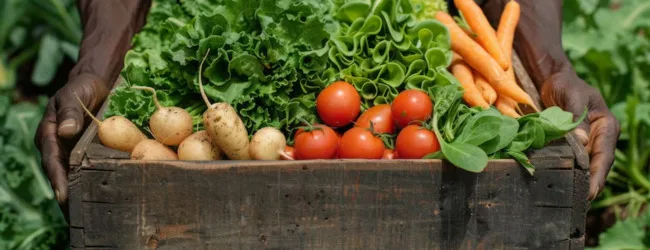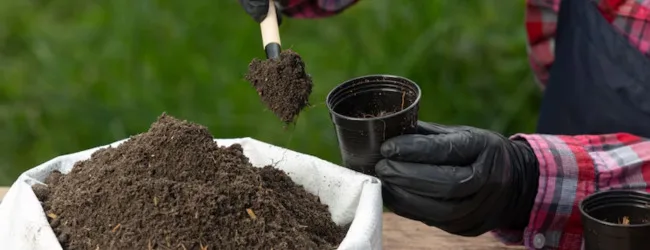Table of contents
- What is Mixed Farming?
- Types of Mixed Farming
- How Does Mixed Farming Work?
- Step by Step Guide to Start Mixed Farming
- Step 1: Assess Your Resources and Goals
- Step 2: Develop a Comprehensive Farm Plan
- Step 3: Implementing Gradually and Learning Through Experimentation
- Step 4: Nurturing Soil Health as the Foundation
- Step 5: Mastering Livestock Management Skills
- Step 6: Implementing Efficient Manure Management
- Step 7: Embracing Crop Rotation and Diversification
- Step 8: Continuously Seeking Knowledge and Building Networks
- Step 9: Diligent Monitoring and Adaptive Management
- Benefits of Mixed Farming
- Challenges Faced in Mixed Farming
- Future Trends
- Need Expert Guidance?
- Conclusion
- FAQs
In the dynamic world of agriculture, farmers constantly seek innovative and resilient methods to optimize their land use and ensure sustainable livelihoods. Among these approaches, mixed farming stands out as a time-tested yet increasingly relevant system. Rather than specializing in a single agricultural activity, mixed farming embraces the synergy of cultivating crops and raising livestock on the same farm. This integrated approach offers a multitude of benefits, enhancing productivity, improving resource utilization, and fostering ecological balance. Let’s delve deeper into the concept of mixed farming and explore its various facets.
What is Mixed Farming?

Mixed farming is an agricultural system that involves the simultaneous cultivation of crops and the raising of livestock on the same piece of land. Unlike specialized farming, where the focus is solely on one type of agricultural activity, mixed farming strategically combines these two components to create a more integrated and often more sustainable farming operation. The interaction between crops and livestock can lead to mutually beneficial relationships, optimizing resource use and reducing waste. For instance, crop residues can serve as fodder for animals, while animal manure can enrich the soil for crop production. This interconnectedness is a defining characteristic of mixed farming.
Types of Mixed Farming
Mixed farming is not a monolithic practice; it encompasses various combinations and intensities of crop and livestock integration. Here are some common types:
- Crop-Livestock Systems with Emphasis on Crops: In this type, crop production is the primary focus, with livestock playing a supplementary role. Animals might graze on pastureland integrated within the farm or be fed crop byproducts. The manure produced is primarily used to fertilize the fields, enhancing soil fertility and reducing the need for synthetic fertilizers. Examples include farms growing cereals and keeping a small herd of cattle or sheep.
- Crop-Livestock Systems with Emphasis on Livestock: Here, animal husbandry is the dominant activity, with crop cultivation primarily supporting the livestock. Forage crops like hay, silage, and pasture are grown to feed the animals. Some cash crops might also be cultivated, but the main income source is from livestock products such as milk, meat, or wool. Dairy farms that also cultivate feed crops fall under this category.
- Integrated Crop-Livestock Systems: This type emphasizes a more balanced and tightly integrated relationship between crop and livestock production. The outputs of one component are directly and efficiently utilized as inputs for the other. For example, crop residues are a significant feed source, and animal manure is the primary fertilizer. This system often aims for greater self-sufficiency and reduced reliance on external inputs.
- Mixed Farming with Other Enterprises: Some mixed farming systems may also incorporate other agricultural activities like poultry farming, fish farming (aquaculture), or even agroforestry (integrating trees with crops and/or livestock). This further diversifies the farm’s income streams and can enhance ecological sustainability.
The specific type of mixed farming adopted depends on various factors, including the farmer’s resources, market demands, climatic conditions, and personal preferences.
How Does Mixed Farming Work?
The effectiveness of mixed farming lies in the synergistic relationships between its different components. Here’s a breakdown of how it typically works:
- Nutrient Cycling: Livestock manure provides a rich source of organic matter and essential nutrients for crop growth, reducing the dependence on chemical fertilizers. This closes nutrient loops within the farm, promoting soil health and fertility.
- Weed and Pest Control: Integrating livestock grazing can help manage weeds in crop fields and pastures. Crop rotation, often a part of mixed farming systems, can also disrupt pest and disease cycles.
- Risk Diversification: By having multiple income sources (from different crops and livestock products), farmers are less vulnerable to market fluctuations or crop failures affecting a single commodity.
- Resource Optimization: Crop residues and byproducts that might otherwise be wasted can be used as animal feed, while pastureland can provide grazing for livestock, maximizing the utilization of farm resources.
- Improved Soil Health: The addition of organic matter from manure improves soil structure, water retention capacity, and microbial activity, leading to healthier and more productive soils.
- Enhanced Biodiversity: Mixed farming systems often support greater biodiversity compared to monoculture systems, contributing to a more resilient and balanced agroecosystem.
ALSO READ | What is Intensive Subsistence Farming? Types and Practices
Step by Step Guide to Start Mixed Farming

Embarking on mixed farming requires careful planning and a gradual approach. Here’s a step-by-step guide:
Step 1: Assess Your Resources and Goals
- Land Availability: Determine the total land area available and assess its suitability for different crops and pasture.
- Capital Investment: Evaluate your financial capacity for purchasing livestock, seeds, equipment, and infrastructure.
- Labor Availability: Consider the labor required for both crop and livestock management.
- Market Analysis: Research the local and regional markets for potential crops and livestock products.
- Personal Goals: Define your objectives, whether it’s increased income, improved sustainability, or reduced reliance on external inputs.
Step 2: Develop a Comprehensive Farm Plan
- Crop Selection: Choose crops that are well-suited to your climate and soil, considering factors like market demand, nutritional value, and their potential to provide feed or improve soil health.
- Livestock Selection: Select livestock species and breeds that align with your resources, market opportunities, and personal expertise. Consider their feed requirements and manure production.
- Integration Strategy: Plan how the crop and livestock components will interact. Determine grazing rotations, manure management strategies, and how crop residues will be utilized.
- Infrastructure Planning: Design the layout of your farm, including fields, pastures, animal housing, storage facilities, and processing areas.
- Financial Planning: Develop a detailed budget that includes initial investments, operating costs, and projected income.
Step 3: Implementing Gradually and Learning Through Experimentation
Avoid overwhelming yourself by trying to implement everything at once. A phased approach allows for learning and adaptation.
- Prioritize Initial Activities: Focus on establishing the most critical components of your system first, such as preparing land, planting initial crops, or acquiring a small number of livestock.
- Small-Scale Trials: Conduct small-scale trials with different crop varieties or livestock breeds to see what performs best under your specific conditions.
- Record Keeping: Maintain detailed records of your planting dates, yields, animal health, feed consumption, expenses, and income. This data will be invaluable for making informed decisions and identifying areas for improvement.
- Observation and Adaptation: Regularly observe your crops and livestock for signs of pests, diseases, nutrient deficiencies, or stress. Be prepared to adjust your practices based on your observations and the results of your trials.
- Seek Mentorship: Connect with experienced mixed farmers in your region. Their advice and insights can be invaluable.
💡Pro Tip: If you want to start a business but have too many doubts, connect with a business expert from Boss Wallah for guidance – https://bw1.in/1116
Step 4: Nurturing Soil Health as the Foundation
Healthy soil is the cornerstone of a productive and sustainable mixed farming system.
- Organic Matter Management: Prioritize practices that increase soil organic matter, such as incorporating animal manure, compost, cover crops, and crop residues.
- Reduced Tillage: Minimize soil disturbance through reduced or no-till farming practices to improve soil structure, water infiltration, and microbial activity.
- Cover Cropping: Plant cover crops during fallow periods to protect the soil from erosion, suppress weeds, and add organic matter.
- Green Manures: Incorporate green manure crops (e.g., legumes) into your rotation to fix nitrogen in the soil.
- Soil Testing and Amendments: Regularly test your soil and apply amendments (e.g., lime, organic fertilizers) based on the results to ensure optimal nutrient levels.
Step 5: Mastering Livestock Management Skills
Successful integration of livestock requires specific knowledge and skills.
- Animal Husbandry Basics: Learn about the specific needs of your chosen livestock species, including their feeding requirements, housing needs, social behavior, and handling techniques.
- Health and Disease Management: Develop skills in recognizing signs of illness, providing basic first aid, and working with a veterinarian for preventative care and treatment.
- Feeding and Nutrition: Understand the nutritional requirements of your livestock at different life stages and how to formulate balanced rations using on-farm resources and purchased feed.
- Breeding and Reproduction (if applicable): If you plan to breed animals, learn about reproductive cycles, breeding techniques, and animal selection for desired traits.
- Safe Handling Practices: Implement safe handling techniques to protect both yourself and your animals.
Step 6: Implementing Efficient Manure Management

Manure is a valuable resource in mixed farming; proper management is key.
- Collection and Storage: Develop efficient systems for collecting and storing manure to minimize nutrient loss and odor. Consider different storage methods like composting piles or liquid manure tanks.
- Composting Techniques: Learn how to compost manure effectively to kill pathogens, reduce odor, and create a nutrient-rich soil amendment.
- Application Methods: Understand different methods for applying manure to your fields, such as spreading solid manure or injecting liquid manure, and choose the method that best suits your farm and minimizes environmental impact.
- Nutrient Management Planning: Analyze the nutrient content of your manure and adjust your fertilizer applications accordingly to avoid over-fertilization.
Step 7: Embracing Crop Rotation and Diversification
These practices are crucial for long-term sustainability and resilience.
- Develop a Multi-Year Rotation Plan: Plan your crop rotations over several years, considering different plant families, soil nutrient needs, and pest and disease cycles.
- Introduce Diversity: Grow a variety of crops, including those for cash, feed, and soil improvement (cover crops, green manures).
- Consider Intercropping: Explore the possibility of growing two or more crops simultaneously in the same field to improve resource utilization and pest control.
Step 8: Continuously Seeking Knowledge and Building Networks
Agriculture is a constantly evolving field. Continuous learning is essential.
- Read Books and Journals: Stay updated on the latest research and best practices in mixed farming.
- Attend Workshops and Conferences: Participate in educational events to learn new skills and network with other farmers.
- Join Farmer Organizations: Connect with local and regional farmer organizations to share experiences and access resources.
- Seek Advice from Experts: Don’t hesitate to consult with agricultural extension agents, soil scientists, veterinarians, and experienced farmers.
Step 9: Diligent Monitoring and Adaptive Management
Regularly assess your farm’s performance and be willing to make adjustments.
- Track Key Performance Indicators (KPIs): Monitor yields, animal production, input costs, income, and soil health indicators.
- Regular Farm Walks: Regularly inspect your fields and livestock to identify any problems early on.
- Data Analysis: Analyze your farm records to identify trends, evaluate the effectiveness of your practices, and make data-driven decisions.
- Flexibility and Adaptability: Be prepared to adjust your farm plan and practices in response to changing market conditions, climate variability, and your own experiences.
Benefits of Mixed Farming
Mixed farming offers a wide array of advantages, contributing to both the economic viability and environmental sustainability of agricultural operations:
- Increased Income Stability: Diversified income sources from both crops and livestock reduce financial risks associated with market fluctuations or crop failures.
- Improved Soil Fertility: The use of animal manure as organic fertilizer enhances soil structure, water retention, and nutrient availability, leading to healthier and more productive soils.
- Reduced Reliance on External Inputs: Integrated systems can reduce the need for synthetic fertilizers, pesticides, and purchased feed, lowering input costs and environmental impact.
- Enhanced Resource Efficiency: Crop residues and byproducts can be used as animal feed, while pastureland can provide grazing, maximizing the utilization of farm resources and reducing waste.
- Better Pest and Disease Management: Crop rotation and the presence of livestock can help break pest and disease cycles, reducing the need for chemical interventions.
- Increased Biodiversity: Mixed farming systems often support a greater variety of plant and animal life compared to monoculture, contributing to a more resilient and balanced agroecosystem.
- Improved Food Security: Producing a variety of food and feed on the farm can enhance household food security and resilience.
- Synergistic Relationships: The interactions between crops and livestock can create mutually beneficial relationships that enhance overall farm productivity.
ALSO READ | What is Plantation Farming? Definition, Importance and Benefits
Challenges Faced in Mixed Farming

Despite its numerous benefits, mixed farming also presents certain challenges:
- Increased Management Complexity: Managing both crop and livestock enterprises requires a broader range of knowledge and skills compared to specialized farming.
- Higher Initial Investment: Setting up infrastructure for both crops and livestock may require a larger initial capital outlay.
- Potential for Conflicting Demands: Managing labor, time, and resources effectively across different enterprises can be challenging, especially during peak seasons.
- Need for Specific Infrastructure: Adequate housing for livestock, storage for feed and crops, and appropriate equipment for both activities are necessary.
- Learning Curve: Farmers transitioning to mixed farming may need time and effort to acquire the necessary expertise in both crop and animal husbandry.
- Market Access for Diverse Products: Farmers may need to develop marketing strategies for a wider range of products.
- Balancing Resource Allocation: Determining the optimal allocation of land, labor, and capital between crop and livestock enterprises can be complex.
Future Trends
Mixed farming is gaining renewed interest as a sustainable and resilient agricultural approach. Future trends in this area include:
- Precision Agriculture Integration: Utilizing technologies like GPS, sensors, and data analytics to optimize resource management in both crop and livestock components.
- Agroecological Approaches: Combining mixed farming principles with agroecological practices to further enhance biodiversity, soil health, and ecosystem services.
- Climate-Smart Agriculture: Designing mixed farming systems that are more resilient to climate change impacts, such as drought and extreme weather events.
- Value-Added Processing: On-farm processing of both crop and livestock products to increase profitability and create local market opportunities.
- Consumer Demand for Sustainable Products: Growing consumer preference for sustainably produced food is creating opportunities for mixed farming systems.
- Policy Support: Increased government and institutional support for diversified and sustainable farming systems, including mixed farming.
Need Expert Guidance?
Starting a business can be challenging, but you don’t have to do it alone! At Boss Wallah, our 2,000+ business experts are ready to provide valuable insights and guidance. Whether you need help with marketing, finance, sourcing, or any other area of any business, our business experts are here to help you succeed- https://bw1.in/1116
Confused about Which Business to Start?
Want to start your own business but unsure which one to choose? Explore Boss Wallah, where you’ll find 500+ courses by successful business owners, featuring practical, step-by-step guides on starting and growing various businesses. Find your perfect business idea today – https://bw1.in/1111
Conclusion
Mixed farming represents a holistic and integrated approach to agriculture that harnesses the natural synergies between crops and livestock. While it presents certain management challenges, its numerous benefits in terms of economic stability, environmental sustainability, and resource efficiency make it a compelling model for the future of agriculture. By embracing diversification and integration, farmers can build more resilient and productive farming systems that contribute to both their livelihoods and the health of the planet.
FAQs
- Is mixed farming the same as subsistence farming?
- No, while some subsistence farms may incorporate elements of mixed farming, the primary goal of subsistence farming is to produce enough food for the farmer’s family, whereas mixed farming is often commercially oriented, aiming to sell surplus produce.
- What are some examples of successful mixed farming systems?
- Examples include farms that integrate grain production with cattle or sheep grazing, dairy farms that grow their own forage crops, and farms that combine fruit orchards with poultry or beekeeping.
- How can mixed farming improve soil health?
- Animal manure adds organic matter and essential nutrients to the soil. Crop rotation, often practiced in mixed farming, also improves soil structure and reduces nutrient depletion.
- Does mixed farming require more land?
- Not necessarily. While integrating livestock requires pasture or land for forage crops, efficient resource utilization within a mixed system can often lead to higher overall productivity per unit of land compared to specialized farming.
- How can a small-scale farmer benefit from mixed farming?
- Small-scale farmers can benefit from diversified income streams, reduced reliance on expensive external inputs, improved household food security, and enhanced soil fertility, leading to more sustainable and resilient livelihoods.
- What role does crop rotation play in mixed farming?
- Crop rotation is a key practice in mixed farming that helps to improve soil health, manage pests and diseases, provide varied feed for livestock, and optimize nutrient cycling.
- How can technology be used in mixed farming?
- Technology can assist with precision feeding of livestock, optimized irrigation and fertilization of crops, monitoring animal health, and managing farm data for better decision-making.
- What are the long-term benefits of adopting mixed farming?
- Long-term benefits include increased farm resilience, improved soil health, reduced environmental impact, greater income stability, and enhanced food security for both the farmer and potentially the wider community.


